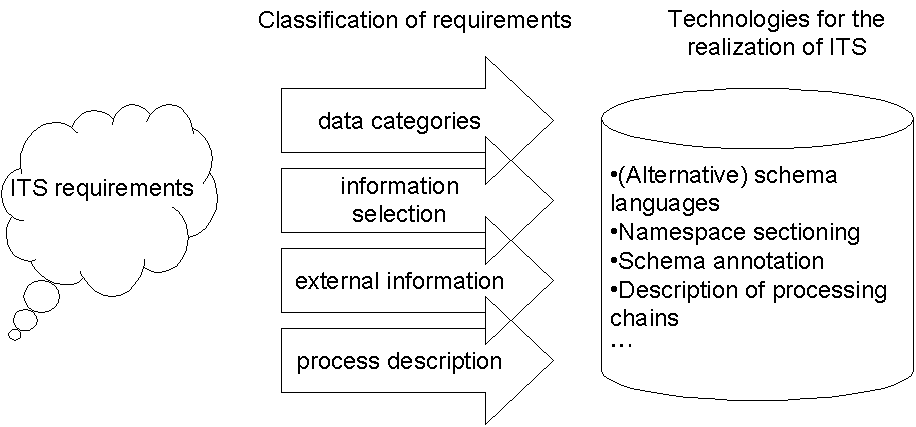Project review 30 June 2005: Requirements of the Internationalization Tag Set Working Group (i18n ITS WG) and possible technologies for their realization.
This presentation sketches the work of the i18n ITS WG:
- Which issues does the WG address?
- Which requirements / issues currently appear to be hard to resolve?
- What is the current status?
- Recommendations from the team?
Goals of ITS
- producing a set of tags that people can use to ensure both internationalization and localizability in their schemas - be they based on DTDs, XML Schema or other technologies.
- descriptions of requirements for i18n and l10 which are hard to express via a tag set.
- using additional technologies beyond schema languages to fulfill the requirements.
Requirements for ITS
Identifying date and time
It should be possible to indicate in markup that a string represents an ISO 8601 date and/or time.
Bidirectional text
There has to be a mechanism to indicate the directionality of text.
 |
Wrong directionality is visualized, relying only on the Unicode bidirectional algorithm |
 |
Feasible directionality is visualized |
 |
Markup to produce the feasible visualization |
Problems we face with the ITS requirements
- Requiring uniqueness across documents is not possible with schema
languages.
- Information about attributes is hard to express.
- How to describe linking to external information? The example requires more than could be achived with XLink or XInclude.
- How to integrate ITS in existing schemas without breaking existing validation and further processing chains (e.g. breaking XPath expressions)?
- What to do about versioning?
- How to specify inheritance features?
Our current state:

Schema languages
Alternatives
XML DTDs, XML Schema, RELAX NG; in addition: Schematron?
ITS is - among others - meant for schema authors. The question is: Do we formulate requirements which cannot be fulfilled with all schema languages?
Important criteria:
- Tool support: l10n tools mainly support XML DTDs.
- Expressive power: Do we need a typing system?
- Expressive power: Do we need expressive content models?
- Uniquenesss across documents: Can only be validated via Schematron / XPath 2.0
Namespace sectioning
General idea
Rules describe what namespace should be validated against what schema. According to the rules, documents are seperated into schema-specific element and attribute sections.
Benefits
No need to change the existing schemas. Existing XPath expressions for a given scheme still work for the sections respectively!
Problems
Will this be supported widely? Will this be part of a W3C standard?
Schema annotation
General idea
ITS data categories are realized as additional information to the given schema.
Benefits
Allows for reusing existing schemas, without a need to change them.
Problems
Which annotation format to use? SGML based architectural forms? RDF-based annotations? DSDL part 8? an ITS-specific format?
XML processing model
General idea
The interrelation between processing steps like namespace sectioning, validation, linking to external information etc. are described in a declarative format.
Benefits
Holds everything together :)
Problems
When will it come? There is an urgent need for ITS, and we can't wait too much!
Questions to discuss
- What should be realized on the schema level (i.e. with extensions to
schemas or as a schema module)?
- What schema language should we rely on?
- What additional techniques except schema languages should we rely
on?
- Should we describe a processing model for ITS?
- Do we need different levels of conformance for ITS, i.e. ITS light
(just names for elements and attributes) and ITS full (linking
mechanisms, a processing model, ...)?



